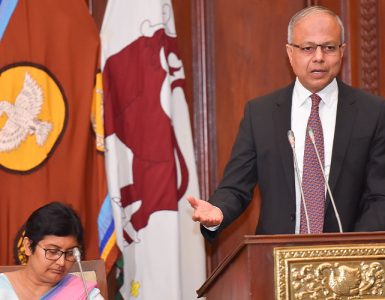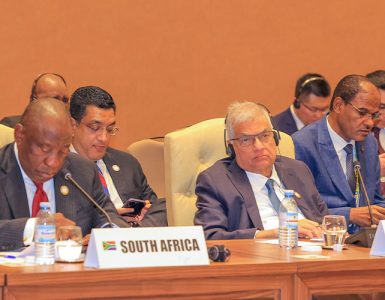The State Minister for Power and Energy, Mr. Indika Anuruddha, stated that there is a concerted effort to reduce the country’s electricity costs by focusing on supplying 70% of the nation’s power through renewable sources.
Additionally, he highlighted that President Ranil Wickremesinghe has issued directives to accelerate the implementation of the 70% renewable energy generation plan, which was initially set in 2019.
Mr. Indika Anuruddha, the Minister of State for Power and Energy, made these remarks during his participation in the press conference held yesterday (20) at the Presidential Media Center, under the theme ‘Collective Path to a Stable Country.’
Expressing his views further, State Miister Indika Anuruddha said;
Renewable energy stands as the predominant energy source within the nation, offering the potential to retain funds otherwise spent on fossil fuels. This shift not only reduces electricity expenses but also frees up resources for broader development initiatives.
The strategy is to steer 70% of the country’s energy requirements towards renewables. In 2019, the government’s focus was firmly set on advancing the renewable energy program. Consequently, President Ranil Wickremesinghe has issued directives to achieve the ambitious goal of producing 70% renewable energy.
At present, the national grid benefits from 685 megawatts of rooftop solar power, 140 megawatts from ground-mounted solar installations, 263 megawatts generated from wind farms, 434 megawatts from small hydropower facilities and a substantial 1,573 megawatts harnessed by large hydropower plants.
Additionally, the Sustainable Energy Authority has embarked on a mission to identify ideal locations for solar and wind power plant construction. This initiative allows for precise mapping of optimal sites and provides essential information to potential investors.
Furthermore, the Ministry has taken measures to monitor the progress and efficiency of current projects undertaken by investors. Simultaneously, streamlined procedures have been put in place to expedite project approvals, facilitating rapid development.
Initial plans to interconnect renewable energy sources with the South Asian grid via India have been solidified to address potential grid instability.
To enhance the country’s energy landscape, a comprehensive strategy has been developed by the Electricity Board. This strategy spans from 2023 to 2026, with an extension plan encompassing 2027 to 2030. This flexible framework allows for adjustments based on the country’s evolving energy needs, ensuring adequate electricity production.
Efforts have been made to identify investors for power generation projects. Furthermore, approvals for investors who have received initial consent but have not commenced projects within a two-year timeframe are slated for cancellation, with the intention of reassigning these projects to other interested investors.
Streamlining the process for renewable energy production has been a priority in the search for new investors, departing from existing methodologies and focusing on enthusiastic stakeholders.
While the Uma Oya project faced delays due to various challenges, it is now approaching its final stages, with expectations of integrating its generated electricity into the main grid by the coming month.
Despite the existing potential for large-scale energy systems within the country, substantial investors are essential. Consequently, India’s Adani Company has expressed interest in establishing extensive wind farms in the northern region. Additionally, they are considering investments in transmission infrastructure, which would alleviate electricity transmission impediments and ensure energy reaches its intended destinations.
The proliferation of renewable energy sources has prompted the development of fundamental plans for utilizing pumped hydroelectric storage technology to store and harness water as energy. The Asian Development Bank’s support has expedited this initiative.
A Memorandum of Understanding with Singapore to reduce carbon emissions paves the way for obtaining concessional interest rates by increasing renewable energy adoption. Methods for financial incentives are also under consideration.
Furthermore, the government is exploring the potential of nuclear energy generation, acknowledging that this endeavour will necessitate time and a comprehensive feasibility study.





